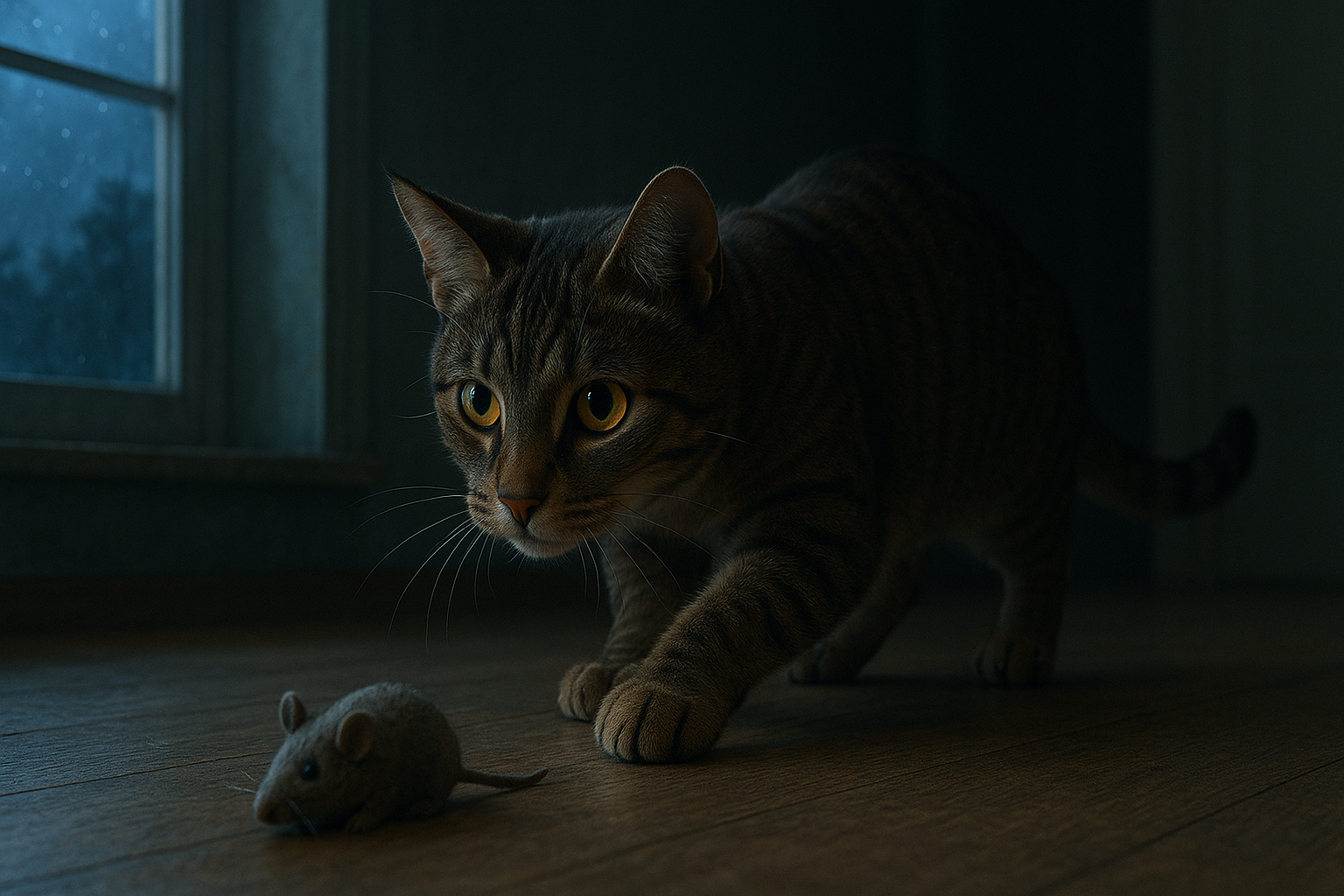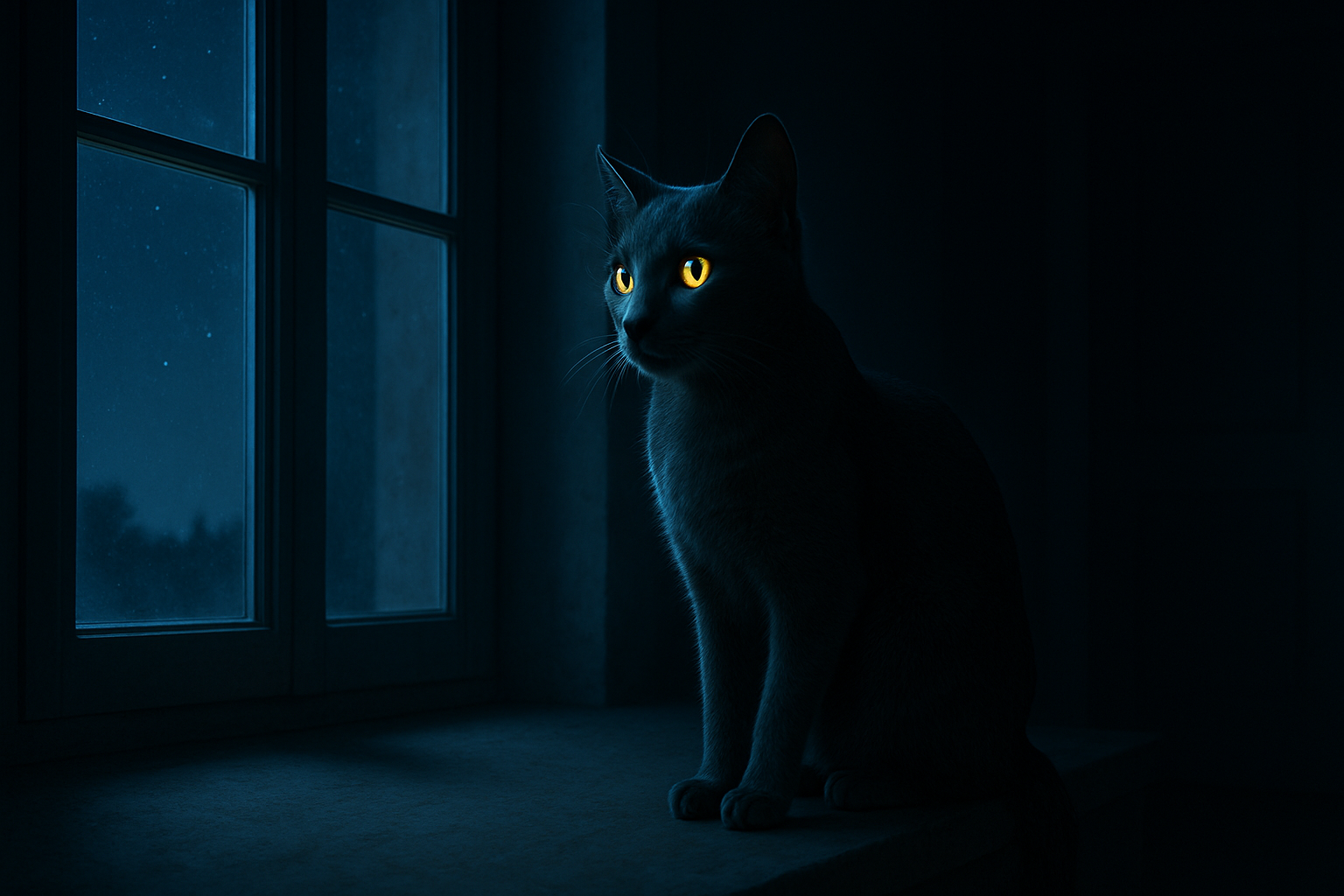Ever wondered how your cat can dart across the room at night without bumping into anything? Or why their eyes seem to glow in the dark? You’re not alone. One of the most common questions cat parents ask is: can cats see in the dark?
The short answer is yes—but there’s a little more science behind those glowing eyes and midnight zoomies. Let’s explore what gives cats their legendary night vision and how it stacks up against ours.
Why Can Cats See in the Dark?
Cats are naturally built for low light conditions. Unlike humans, who rely heavily on daylight and artificial lighting, cats have evolved as crepuscular creatures—meaning they’re most active at dawn and dusk.
Their ability to see in near darkness is an evolutionary adaptation that helps them detect movement, stalk prey, and navigate their surroundings when light is minimal.
How a Cat’s Eyes Work at Night
So how does feline vision work in the dark? A few special features give cats an edge when the lights go out:
- Tapetum lucidum: This reflective layer behind the retina acts like a mirror, bouncing light back through the eye and giving it a second chance to be absorbed. It’s also what causes the famous “eye shine” effect at night.
- Rod cells: Cats have far more rods than cones in their retinas. Rods detect light and motion—making them ideal for dim environments.
- Pupil dilation: A cat’s pupils can expand up to three times wider than ours, letting in much more ambient light.
These traits give cats exceptional night vision—but not perfect vision. Their world still appears blurrier and less colorful than ours in bright light.
How Well Can Cats Really See in the Dark?
Cats can’t see in complete darkness—but they can see in about one-sixth the amount of light humans need. While their vision may not be crystal-clear, they’re experts at detecting motion and navigating by shadows.
We might see vague shapes in low light, but cats can detect the twitch of a toy or mouse across the room thanks to strong peripheral awareness and retinal sensitivity.

Can Cats See Color in the Dark?
Not really. While cats aren’t color blind, they don’t see the full light spectrum like we do. They see shades of blue and green better than reds and oranges, but even those colors fade in dim light.
At night, cats rely more on contrast and motion than color. Their brains are wired to focus on what moves—not what glows.
At What Age Can Cats See in the Dark?
Kittens are born blind. Their eyes open around 7–10 days, and their vision develops rapidly after that. By about 8 to 12 weeks, most kittens have functional low-light vision, although it continues to sharpen with age.
Senior cats, on the other hand, may experience a decline in vision due to issues like retinal degeneration or light sensitivity. Regular vet checkups can help monitor age-related vision loss.
Limitations of Cat Night Vision
Even with their impressive adaptations, cats don’t have flawless vision. Their visual clarity is lower than ours in daylight, and they don’t adjust quickly between light and dark spaces. What they see best is movement, not detail.
They also rely heavily on their other senses—especially hearing and whiskers—to guide them in complete darkness. Indoor cats may have fewer opportunities to refine these skills than outdoor or feral cats, who depend on them nightly.
Final Thoughts: Are Cats Truly Night Vision Experts?
Cats may not have superpowers, but they’re still impressive. Their eyes are tuned for low-light performance, giving them an edge during the twilight hours when other animals are winding down.
If your cat seems most active at night, it’s because they’re built for it. Keep their environment safe, support their eye health, and maybe add a soft light or two if they roam in the dark. A little extra glow never hurts—even for nature’s night hunters.
Cat Night Vision FAQs
Can cats see in complete darkness?
No, cats can’t see in total darkness. They need at least a small amount of ambient light—like starlight or a nightlight—to see.
Why do my cat’s eyes glow at night?
That glowing effect is caused by the tapetum lucidum, a reflective layer behind the retina that enhances night vision and creates the “eye shine.”
Do older cats have worse night vision?
Yes, older cats may experience reduced retinal sensitivity and light perception due to age-related eye conditions.
Can kittens see in the dark?
Not right away. Kittens develop their night vision over several weeks, usually becoming confident explorers around 8–12 weeks old.




